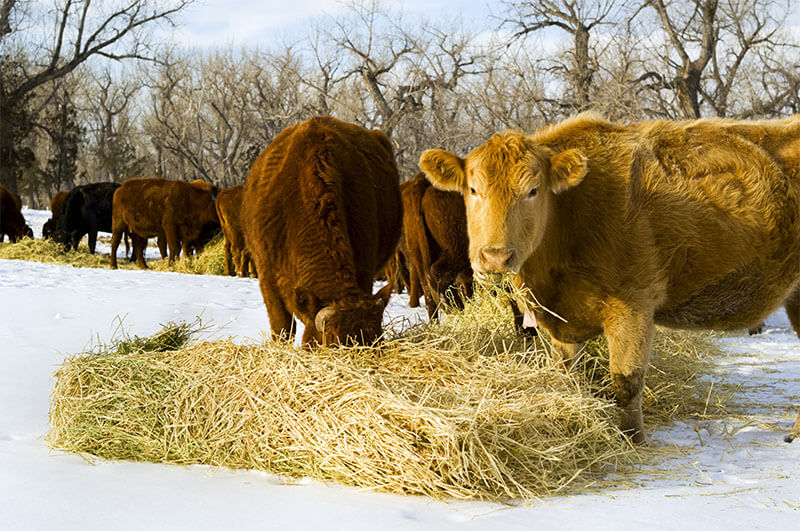When it comes to feed for livestock, all barley is not the same.
There are many different feed varieties and many more are being developed as time goes on. The Montana Food and Agricultural Development Center (FADC) Network shares our area’s development centers on their website.
The FADC does extensive research on these varieties of barely and compares chemical analysis of each to develop mathematical equations that attach to each grain type. The more data that is collected from these research projects, the stronger the calibrations become over time and the better the barley is and the more options available for breeders to make their selections come spring time. Equations that began with calibrations for such aspects as protein, moisture, starch, and lysine, allow researchers to work on characteristics for more complex traits such as digestible energy content, protein digestibility, and fiber digestibility.
Feed quality is important and a high priority because as varieties are developed, they are assessed for yield so that the customer gets a high return on investment. Varieties need to yield the most, on the least amount of land, with the smallest amount of inputs. The variety of barley should be chosen carefully because varieties cannot go beyond their genetic potential. Different varieties are developed for different reasons, so even if they happen to be in the same class, they very well might have completely different quality traits.
Here are a few different FADC varieties with various traits:
- This is a six-row feed barley that is unique because it has been developed for added plumpness. It processes very evenly and is also suited for forage as well as feed.
- Original bred as a two-row malt variety, it has a high yield that is comparable to feed variety yields. It is actually known as a triple-use variety, so if you plant this barley in the hopes of getting a malt premium, you will not lose out if it doesn’t work out.
- This is a six-row feed variety that is smooth-awned with a very good yield and disease package.
- A two-row feed barley that has a nice plump kernel as well as being a strong grain, which makes it useful for forage yield in some cases. It is higher in starch and digestible energy content, yet lower in fiber, making it perform well for feeding uses.
Looking at plots, seed guides, and even advertisements will tell you a lot about barley varieties as well, but each will have its limitations. Things like leaf content are important because of its nutritional value, but it only represents about 10% of the dry weight of the crop.
Other things that you can’t see, such as stem cell walls, can be offset by starch in the grain. Looking at just the plots of a grain may not give you an accurate view of the entire yield and quality story.
At silage, grain may represent 35-45% of the weight, with the stems making up a comparable amount. The rest is awns and chaff, but the stems are the least digestible.
Feed quality is important for swath grazing beef cows, and the high yield is always the biggest part of the analysis. High yield will translate into lower cost per unit of production and it also has a higher carrying capacity. The result of this will be to either use less acreage to for swath grazing, or to simply graze more animals on the same amount of land. In recent swath grazing trials at Lacombe, triticale planted in early June yielded over 50% more tonnage than late seeded barley.
When it comes to feed barley, the rate of grain components factor into all the feed quality parameters. The cost of grain equation factors into the value of each kilo produced, the amount fed, and the rate of grain. Because of this, the results are specific to each growing region and the class of the animals that are being fed.
These things have to be taken into account when choosing a feed-barley for your region. The purpose is to compare varieties grown within the trial to those that are managed the same way. This should enable you to choose the variety that would be the least risky to grow and use for feed for your particular farm.
It can differ from year to year as to how important it is for you to choose the best variety. Economically it makes sense to choose the types that provide for the best chance of success, but that can be a minuscule difference in some years and make a large difference in other years. The catch comes in that when you buy your seed in the spring, you don’t know what will happen six months to a year down the road as far as weather and other factors are concerned.
Because of this, some years the choice you make may not produce much difference and other years it can be crucial. In any case, it is always best to be armed with as much information as possible to based your decision on.
For more information on feed, stop on by one of our Farm & Ranch Supply stores today!


